The average cost of Polycystic Ovarian Syndrome (PCOS) Treatment in Turkey starts from TRY 75350 (USD 2500)
Polycystic ovarian disease is one of the most common endocrine or hormonal disorder in females of reproductive age. It is characterized by infrequent or prolonged periods and higher levels of male hormones called androgens.
Since females suffering from PCOD may suffer from a combination of different symptoms, it is also known as polycystic ovarian syndrome. The objective of PCOS treatment is to control or reduce the severity of the symptoms by treating the underlying cause. Some of the most common forms of treatment include birth control pills to regulate menstrual cycles, hormones to regulate ovulation and drugs such as metformin and statins to control blood sugar and cholesterol levels.
Losing weight, staying physically active, and reducing the intake of carbohydrates are known to help women with PCOS.
PCOS treatment is required in the following categories of females:
Some women may have PCOS but may not know it because of the absence of any symptoms.
The following factors affect polycystic ovarian syndrome treatment cost:
Treatment cost
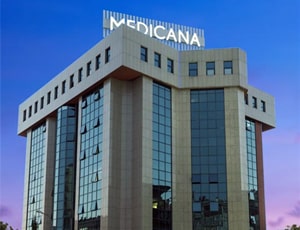
Medicana Camlica Hospital located in Istanbul, Turkey is accredited by JCI. Also listed below are some of the most prominent infrastructural details:
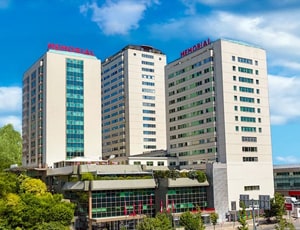
Memorial Sisli Hospital located in Istanbul, Turkey is accredited by JCI. Also listed below are some of the most prominent infrastructural details:

Memorial Ankara Hospital located in Ankara, Turkey is accredited by JCI. Also listed below are some of the most prominent infrastructural details:

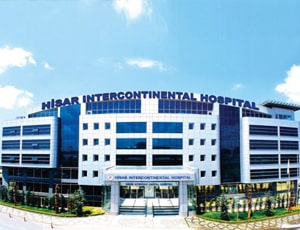
Architecture of the Hospital designed as per the comfort of patients-

Acibadem Kadikoy Hospital located in Istanbul, Turkey is accredited by JCI. Also listed below are some of the most prominent infrastructural details:
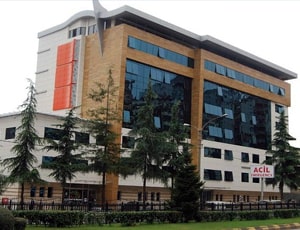
Apart from in-detail treatment procedures available, Medical Park Karadeniz Hospital located in Trabzon, Turkey has a wide variety of facilities available for International Patients. Some of the facilities which are provided by them are Accommodation, Airport Transfer, Choice of Meals, Interpreter, TV inside room. Also listed below are some of the most prominent infrastructural details:
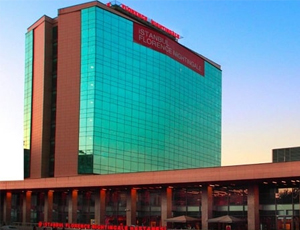
The first green hospital in Turkey, Istanbul Florence Nightingale Hospital, was inaugurated in 2013. Group The Florence Nightingale hospitals are the first Turkish hospitals to be granted Joint Commission International (JCI) accreditation, and they continue to be associated and work with esteemed healthcare organizations.
The Florence Nightingale Group treats 250,000 outpatients and 70,000 inpatients annually, demonstrating its excellence. The hospitals have a capacity of 804 inpatient beds, 141 ICU beds, and 40 operating rooms, and perform 20,000+ procedures annually, of which 1,000 are cardiac operations for children and 2,000 are for adults. For conducting difficult orthopedic, general surgery, minimally invasive, and other heart treatments, the facility stands out. All operating rooms can be interconnected by audio-visual to a 300-person conference room and global hubs, enabling interactive medical teaching and scientific activity.
Interpreter and translator services for languages such as Turkish, Azerbaijani, Bulgarian, Arabic, English, Persian, Serbian, Russian, Albanian, Macedonian, German, Bosnian, and Romanian are available.
The hospital has specialized departments such as Cardiology and Cardiac Surgery, IVF and Infertility, Nephrology, Oncology and Oncosurgery, Spine Surgery, Neurology and Neurosurgery, Orthopedics, Gynecology, and Obesity or Bariatric Surgery. With an extensively qualified and experienced team of advisors and interpreters, Florence Nightingale Istanbul is committed to providing one-stop service from beginning to end, 24 hours a day, 7 days a week.

Acibadem Altunizade Hospital located in Istanbul, Turkey is accredited by JCI. Also listed below are some of the most prominent infrastructural details:

Acibadem International Hospital located in Istanbul, Turkey is accredited by JCI. Also listed below are some of the most prominent infrastructural details:

Acibadem University Hospital Atakent located in Istanbul, Turkey is accredited by JCI. Also listed below are some of the most prominent infrastructural details:
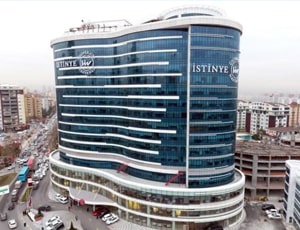
Apart from in-detail treatment procedures available, Istinye University Bahcesehir - LIV Hospital located in Istanbul, Turkey has a wide variety of facilities available for International Patients. Some of the facilities which are provided by them are Accommodation, Airport Transfer, Choice of Meals, Interpreter, TV inside room. Also listed below are some of the most prominent infrastructural details:
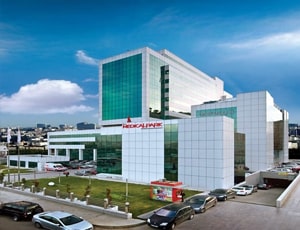
Medical Park Goztepe Hospital located in Istanbul, Turkey is accredited by JCI. Also listed below are some of the most prominent infrastructural details:

Apart from in-detail treatment procedures available, VM Medical Park Bursa Hospital located in Bursa, Turkey has a wide variety of facilities available for International Patients. Some of the facilities which are provided by them are Accommodation, Airport Transfer, Choice of Meals, Interpreter, TV inside room. Also listed below are some of the most prominent infrastructural details:
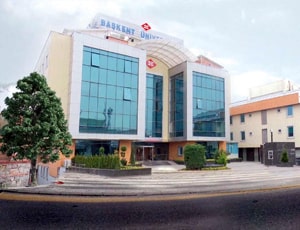
Baskent University Istanbul Hospital located in Istanbul, Turkey is accredited by ISO. Also listed below are some of the most prominent infrastructural details:

Memorial Antalya Hospital located in Antalya, Turkey is accredited by JCI. Also listed below are some of the most prominent infrastructural details:
Women suffering from polycystic ovarian syndrome may show different symptoms. Therefore, polycystic ovarian syndrome treatment for them may differ depending on their concerns.
For example, some women suffering from PCOS could be overweight, therefore, weight loss and diet monitoring may be advised to them initially. Some women with PCOS may have a normal body mass index (BMI), however, they could be suffering from other symptoms such as cystic acne or excessive facial hair. Therefore, she may be put on birth control pills for a while to negate the symptoms.
The following are some of the most common forms of polycystic ovarian syndrome treatment available worldwide:
For women not planning a pregnancy
For women planning a pregnancy
In laparoscopic ovarian drilling, two to three minor incisions are made in the lower abdomen to pass the laparoscope and instruments through which the laser is passed. The ovarian cysts producing high amounts of androgens are ruptures with the help of heat generated by the laser. This lowers the LH and testosterone levels and therefore, the hormone imbalance is temporarily restored.
The following are some of the symptoms of polycystic ovarian syndrome:
Irregular periods or absence of periods is one common sign that may indicate that the woman may have a polycystic ovarian syndrome. However, it can only be confirmed with the help of ultrasound during a regular visit to the gynecologist.
The following tests are performed to confirm PCOS:
Not all women suffering from the polycystic ovarian syndrome are a candidate for treatment. The following women are advised to seek treatment for the polycystic ovarian syndrome:
There are plenty of options available when it comes to PCOS treatment. However, the approach to treatment should be decided based on an individual's profile and factors such as age, symptoms, regularity of menses, and expectations out of the treatment.
Each treatment type has its benefits and risks. While the main benefit is to manage the symptoms and improve the quality of life, some of the common risks of drugs and medications (including birth control pills) may include weight gain, mood swings, hot flashes, and nausea. However, none of the risks are serious or pose a threat to life.
If laparoscopic ovarian drilling has been advised to the woman, then the recovery is fairly quick. Since it is a laparoscopic procedure, the discharge takes place on the very next day. The minor stitches are removed after 7 to 10 days of the procedure and you can return to a normal routine after that. However, ladies are advised not to perform high-impact exercising for at least a month. To exercise, a normal brisk walk is advisable.
Ask your healthcare adviser for the best multiple options and choose the one that meets your expectations
The cost of Polycystic Ovarian Syndrome (PCOS) Treatment in Turkey starts from $2500. SAS, JCI, TEMOS are just some of the accreditations which top hospitals in Turkey hold where a Polycystic Ovarian Syndrome (PCOS) Treatment is conducted.
The cost of Polycystic Ovarian Syndrome (PCOS) Treatment in Turkey may differ from one medical facility to the other. The top hospitals for Polycystic Ovarian Syndrome (PCOS) Treatment in Turkey covers all the expenses related to the pre-surgery investigations of the candidate. The treatment cost usually includes the expenses related to hospitalization, surgery, nursing, medicines, and anesthesia. Post-surgical complications, new findings and delayed recovery may have an impact on the total Polycystic Ovarian Syndrome (PCOS) Treatment cost in Turkey.
There are many hospitals that perform Polycystic Ovarian Syndrome (PCOS) Treatment in Turkey. The top hospitals for Polycystic Ovarian Syndrome (PCOS) Treatment in Turkey include the following:
After discharge from the hospital, the patient has to stay for another 21 days in the country for complete recovery. This time frame is important to ensure that the surgery was successful and the patient is fit to fly back.
There are certain additional cost that the patient has to pay apart from the Polycystic Ovarian Syndrome (PCOS) Treatment cost. These charges starts from USD 50 per person.
Some of the cpopular cities in Turkey that offer Polycystic Ovarian Syndrome (PCOS) Treatment include the following:
It is possible for patients to opt for video telemedicine consultation before they come for Polycystic Ovarian Syndrome (PCOS) Treatment in Turkey. Some of the surgeons offering this service include the following
| Doctor | Cost | Schedule Your Appointment |
|---|---|---|
| Dr. Deniz Gokalp | USD 160 | Schedule Now |
| Dr. Alper Karalok | USD 160 | Schedule Now |
After the Polycystic Ovarian Syndrome (PCOS) Treatment takes place, the average duration of stay at the hospital is about 1 day. This phase is important to ensure that the patient is recovering well and is clinically stable. During this time, several tests are performed before the patient is deemed suitable for discharge.
The average rating for Polycystic Ovarian Syndrome (PCOS) Treatment hospitals in Turkey is 3.6. Several parameters such as hospital infrastructure, pricing policy, quality of services, politeness of staff etc. contribute to the rating.
There are more than 33 hospitals that offer Polycystic Ovarian Syndrome (PCOS) Treatment in Turkey. These hospitals have propoer infrastructure as well as offer good quality of services when it comes to Polycystic Ovarian Syndrome (PCOS) Treatment These hospitals comply with all the rules and regulations as dictated by the regulatory bodies and medical association in Turkey
Some of the best medical specialists for Polycystic Ovarian Syndrome (PCOS) Treatment in Turkey are: